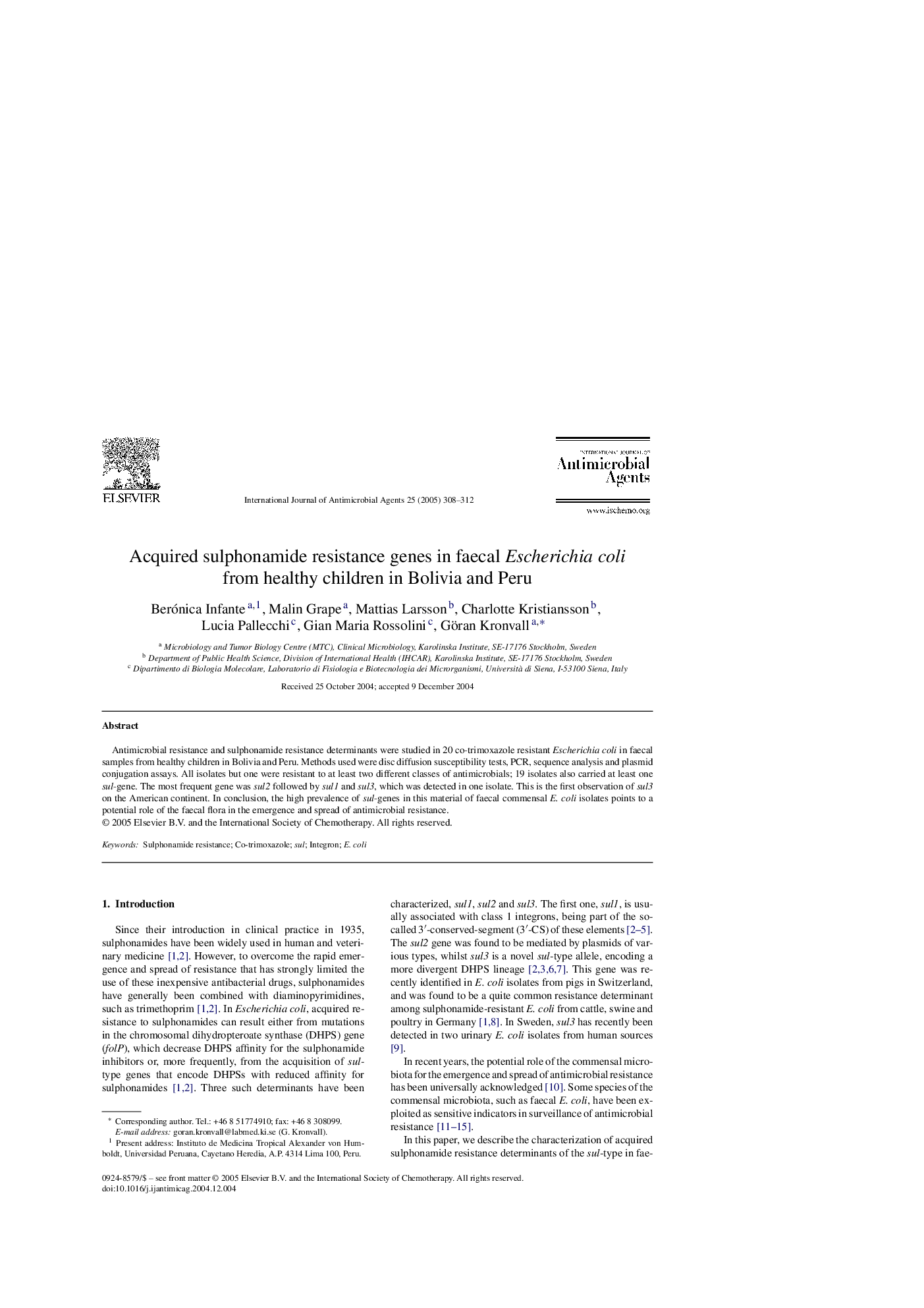| Article ID | Journal | Published Year | Pages | File Type |
|---|---|---|---|---|
| 10027956 | International Journal of Antimicrobial Agents | 2005 | 5 Pages |
Abstract
Antimicrobial resistance and sulphonamide resistance determinants were studied in 20 co-trimoxazole resistant Escherichia coli in faecal samples from healthy children in Bolivia and Peru. Methods used were disc diffusion susceptibility tests, PCR, sequence analysis and plasmid conjugation assays. All isolates but one were resistant to at least two different classes of antimicrobials; 19 isolates also carried at least one sul-gene. The most frequent gene was sul2 followed by sul1 and sul3, which was detected in one isolate. This is the first observation of sul3 on the American continent. In conclusion, the high prevalence of sul-genes in this material of faecal commensal E. coli isolates points to a potential role of the faecal flora in the emergence and spread of antimicrobial resistance.
Keywords
Related Topics
Life Sciences
Immunology and Microbiology
Applied Microbiology and Biotechnology
Authors
Berónica Infante, Malin Grape, Mattias Larsson, Charlotte Kristiansson, Lucia Pallecchi, Gian Maria Rossolini, Göran Kronvall,
